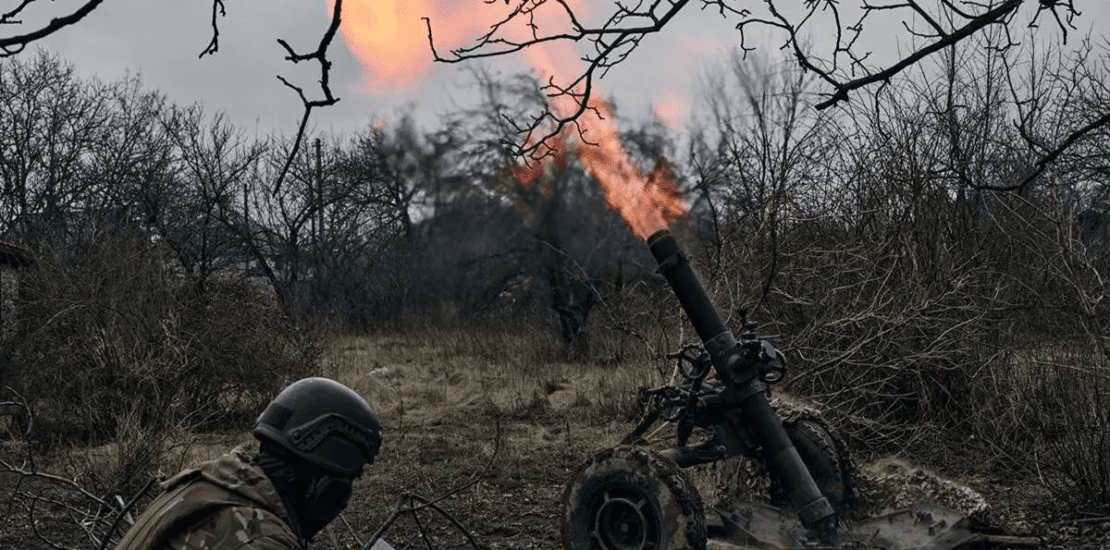Lessons from the Russo- Ukrainian War on Civil Military Fusion
- April 12, 2023
- Posted by: admin
- Categories: Russia, Ukraine

By Lt Gen P R Shankar (R)
Nations which intend to prosecute war and those which are under the threat of being drawn into conflict need to prepare for the long haul.
The yearlong Russo Ukrainian war has thrown up many lessons to the international community. It has completely and conclusively destroyed the fancy idea that future wars will be short term affairs. In fact, when seen with the evidence presented by the Gulf Wars, the USA’s two-decade long Afghan campaign and that presented by the Russo Ukrainian war, it is safe for all of us to conclude that wars will continue to be long drawn. Nations which intend to prosecute war and those which are under the threat of being drawn into conflict need to prepare for the long haul.
The major feature of this war has been the need for a ‘whole of the nation’ approach. Without a whole of the nation approach, wars will not be won. In fact, the opposite will be true. A whole of the nation approach can only be meaningful with a high degree of civil military fusion. The emerging understanding is that civil military fusion implies an ability to integrate and orient the national industrial base to respond to war situations. This ensures forces are well equipped and logistically sustained over the entire period of war. However Civil Military Fusion is far beyond that.
Civil Military Fusion has multiple facets. The first facet is the Politico Military Fusion which ensures that the nation conceptually prepares for war and goes in for war with clearcut aims for specified outcomes, terminal goals, and an exit strategy. The second facet is Information and Strategic Communication Fusion which is increasingly becoming important in war. The third facet is the commonly understood concept of civil military fusion wherein the nation physically prepares for war seamlessly during times of peace and thereafter can sustain it during the entire course of the war. The fourth and important facet is Economic and Financial Fusion through which nations can prepare and fund their war effort.
Politico-Military Fusion
As per the famous Clausewitzian dictum – war is politics by other means. It implies that there must be a very high level of political military convergence before , during and after war. The Ukraine War drives home many lessons on the necessity and importance of politico-military fusion. From all angles it is very evident that Russia went into this war with very little politico-military fusion. The possibility and necessity of a Russian offensive into Ukraine was on the cards for over a decade. Despite this eventuality being building up, the Russian army was not prepared, structured or trained for an offensive manoeuvre into Ukraine to realise the aims of its political hierarchy. There was no politico-military plan for regime change or capture of Kiev. The military leadership and its poorly trained soldiers failed to deliver on the political aims. Further in the second phase of the war, which is ongoing at present, there is no clear cut goal which is to be achieved either militarily or politically. The war termination goals are simply not visible. As a result, the Russian war effort despite a clear superiority of forces is languishing without being able to make a decisive headway. On the other hand, the Ukrainian forces were well prepared for this war. The indications are that they have been preparing for an eventuality of a Russian invasion for a long time. The political and military leadership has been on the same page. Together, they have prepared the nation and have been able to mount a spirited fightback at every stage. Even in the NATO, USA and EU there is clear cut politico-military consonance that they will not fight the war directly but will help Ukraine in its war effort. More importantly USA and NATO seem to be clear that they will tie down and bleed Russia in a hybrid war of attrition.
Information, Strategic Communication and New Technology Fusion
The value of information and strategic communication operations has been underlined in this war. The level of battlefield transparency , information gathering and provision of timely intelligence by US and NATO forces to Ukraine has been a feature of this war. It is significant to note that most of this effort was through civil resources and means, duly repurposed for military use. Integration of space based civil assets like Star Links into the Ukrainian war effort indicates the very high degree of civil military fusion required. Further, inputs indicate that the Ukrainians have co-opted civilians into their cyberwar and drone campaign. Strategic communication from the Ukrainians has been quite effective in garnering international support for their cause. This was feasible due to a clear policy underscored by good politico-military fusion. Across the board, there has been a marked degree of difference between Information and Strategic Communication of the Ukrainians and Russians. The former have been able to fuse this aspect well and have been able to put across a better narrative than the Russians who have not been able to do so. A deeper analysis indicates that information and strategic communication operations are largely based on dual use cutting edge technologies. Nations like the USA which have a good base of new technology usage in their daily life for civilian purposes have been able to reorient it to military use and offer it to the Ukrainians on a plate. It is interesting to note that most cutting edge / disruptive technologies which will impact future battle fields are being researched and developed in the USA in the private sector by their giant corporations like Microsoft, SpaceX, Google, Intel and so on. Equally all these dual use technologies which are being developed for normal civilian usage will be adaptable only through civil military fusion for nations which are still aspiring for these technologies.
Industrial Civil Military Fusion
In the last century, the USA focused its entire industrial might to sustain the second world war and eventually win it. Its ability to produce guns, tanks, ships, and aircraft and maintain them as also provide ammunition for the vast numbers over the entire course of the Second World War ensured the defeat of Germany and Japan. This overall capability was available in Soviet Russia too. In fact, Russia has kept this military industrial complex intact. It is also a well-known fact that Russia has been one of the biggest arms international exporters. The Russian military capacity has been based on its ability to meet its domestic requirement and also cater for its export market. The yearlong Ukrainian war has very clearly indicated that a strong military industrial base premised on deep civil military fusion is still a great necessity to sustain wars. Russia has been able to sustain this war due to its vast industrial capacity and ability. Its export-oriented capacity seems to have given it the surge capacity and stamina to sustain this long war. On the other hand, the western countries which had pared down their defense-industrial capacities to cater for short wars are struggling to sustain Ukraine. If India is to sustain long drawn wars, it must have civil military fusion not only to be able to start a war with a high degree of preparation but should be able to sustain it through surge capacities which stem from defense exports. Hence there is a need to focus on defense exports in a holistic manner so that adequate surge capacities are created to sustain long drawn conflicts.
Economic and Financial Fusion
An important aspect of this war has been that there is a need for economic and financial fusion through a whole of the nation approach. Very clearly, Russia has been able to withstand and circumvent western sanctions to continue with its war effort. It is now clear that it has been preparing financial and economic strategies to be able to fund the war much before the conflict started. While one aspect of financial fusion is circumventing sanctions, the other aspect is provision of adequate funds to prepare its armed forces through enhanced budget allocations. India will have to think of this aspect very seriously. India’s constant underbudgeting of defense is a long-term problem which will hound it in case of a long-drawn conflict. Further India needs to evolve new ways to deal with Chinese trade curbs in case of any eventuality. While these curbs might not amount to sanctions, like those imposed on Russia, China can weaponize trade dependencies and imbalances. We must endeavor to reduce import dependency on China to the extent possible. This is an obtuse form of Civil Military fusion but cannot be lost sight of.
The Civil Military Fusion Conundrum in India
In 2020, I had written that elected political representatives are responsible to defend the nation. They must ensure that the politico-military institutions work concertedly to defend the nation. When such a concert happened between Indira Gandhi and Sam Bahadur in 1971, India had its greatest strategic victory. Will that magic be created once again? In 2019, Our PM highlighted the need of a ‘Future Ready’ force at the combined commanders conference. He then pointedly spoke of ‘shedding legacy systems and practices’ and called for a ‘holistic approach, focused on breaking down civil-military silos and on expediting the speed of decision-making’ beyond weapon procurement. He had then intoned the metaphysical aspect of India’s rise. Four years later what are the outcomes?
Let me highlight it with two examples about which I have recently written. In the current budget, CAPEX, has been increased from 2.7% to 3.3% of the GDP and is likely to shoot up to 4.5% within the year. It emphasises on technology upgradation which includes disruptive technologies. However, the current defence outlay is barely 2% of the GDP and likely to dip even further. There is no mention of convergence of any kind in disruptive technology growth. Take another example. India held the Aero India 2023 which featured military aircraft. In Jan ‘Wings India 2024’ is being held at Hyderabad for civil aircraft. India is the only country which holds two air shows within a year separately for civil and military aerospace sectors. India’s national thought, investment and growth seems diffused from the military. In fact there seems to be no consciousness at all that civil-military fusion is even required despite our PM enunciating it way back in 2019!
If a ‘Future Ready’ India is to take its rightful place in the emerging world order, the civil- military paradigm needs to move towards fusion. Our PM’s prophetic words seem to have dispersed with the winds. The singular lesson of the Ukrainian war for India is that in case India wants to make the transition to be a power of consequence it has to undergo a focussed civil-military fusion process. On that there is no doubt.
